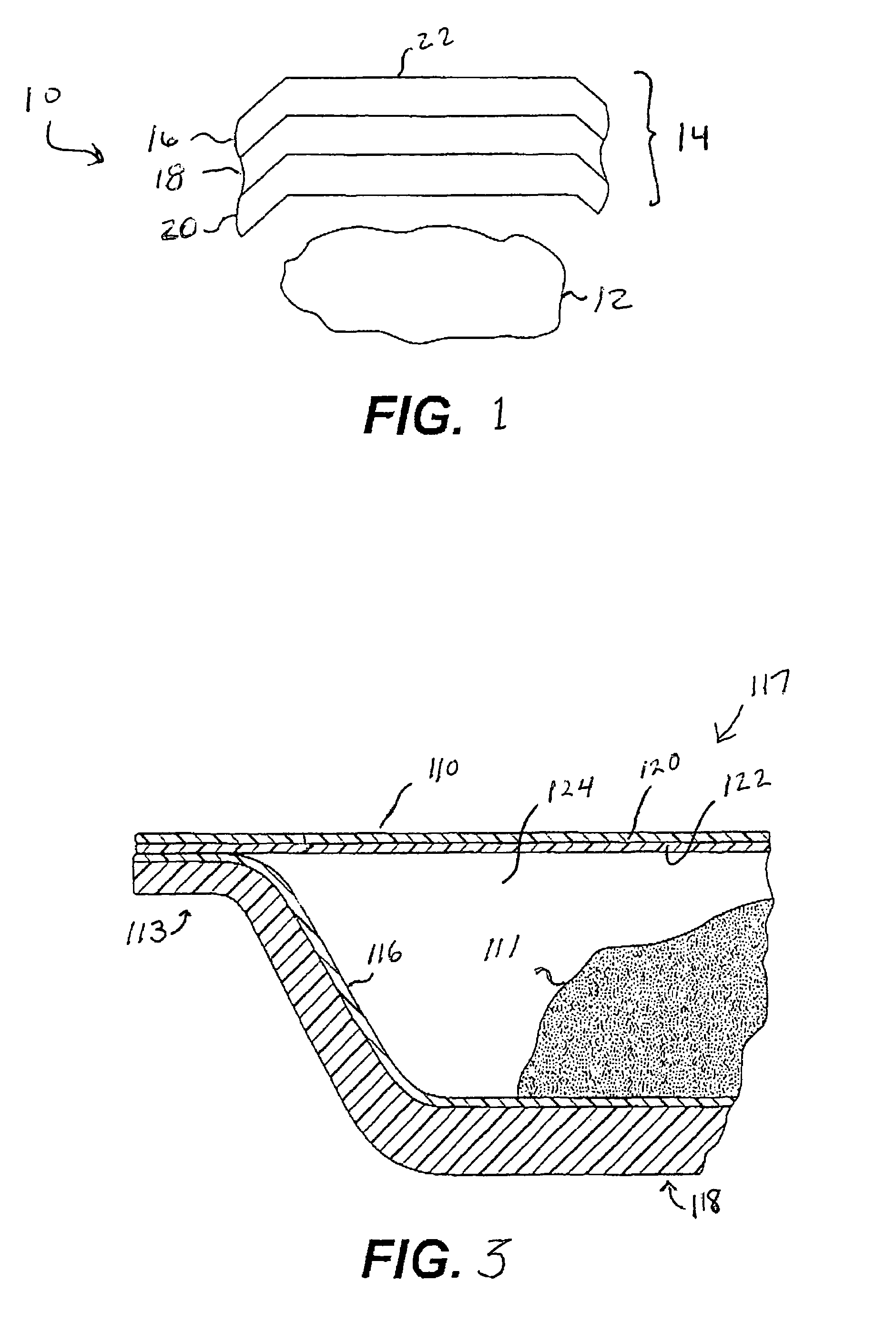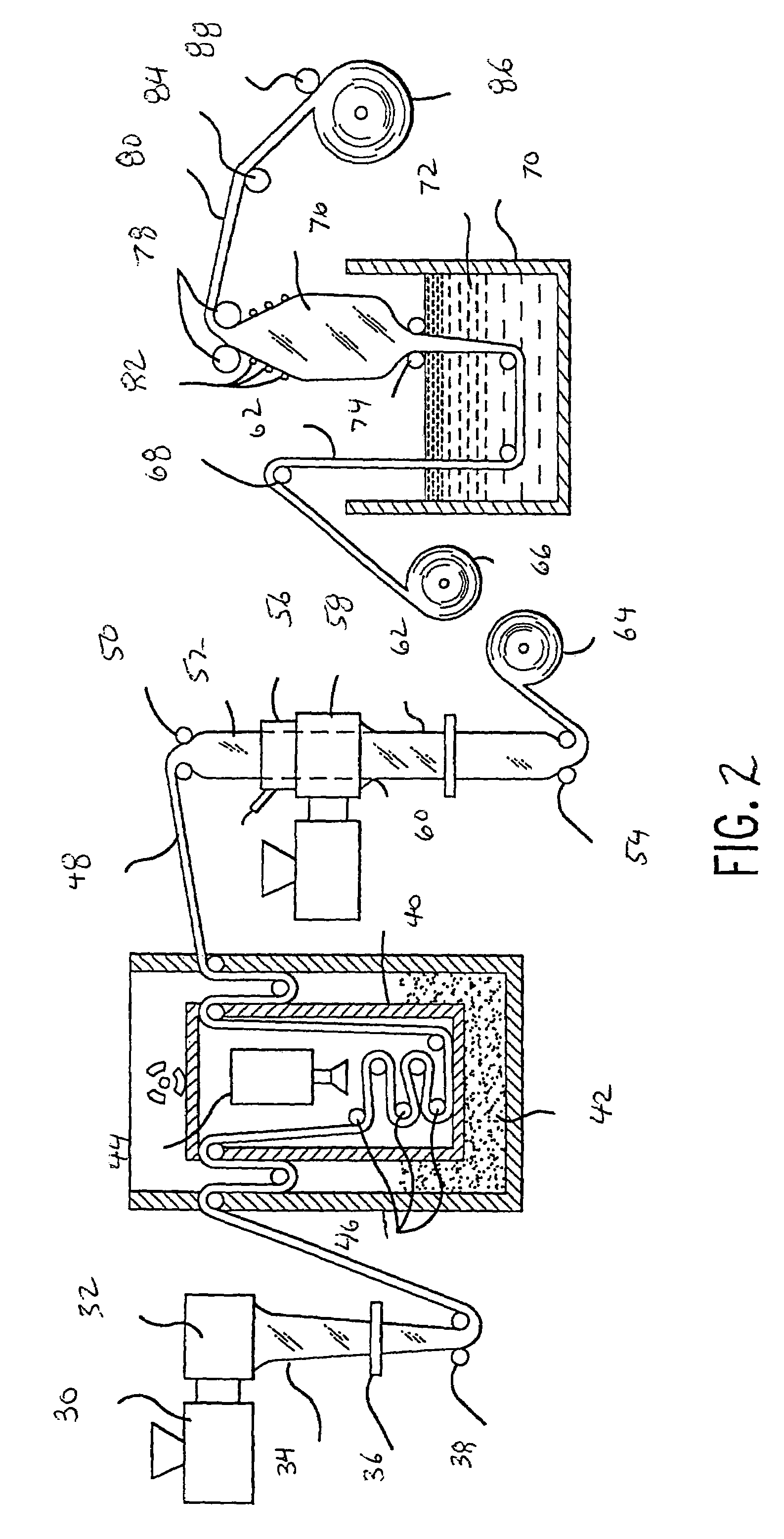Process for detecting leaks in sealed packages
- Summary
- Abstract
- Description
- Claims
- Application Information
AI Technical Summary
Benefits of technology
Problems solved by technology
Method used
Image
Examples
Embodiment Construction
[0046]As used herein, the phrases “heat-shrinkable film,”“heat-shrink film” and the like refers to a film which has been oriented while in the solid state (as opposed to a blown film, which is oriented at, above, or near the melting point of the polymer). The tension on a heat-shrinkable film increases upon the application of heat if the film is restrained from shrinking. As a corollary, the phrase “heat-contracted” refers to a heat-shrinkable film, or a portion thereof, which has been exposed to heat such that the film or portion thereof is in a heat-shrunken state, i.e., reduced in size (unrestrained) or under increased tension (restrained). Preferably, the heat shrinkable film has a total free shrink (i.e., machine direction plus transverse direction), with the free shrink in each direction (measured in accordance with ASTM D 2732) of at least as 5 percent at 185° C., more preferably at least 7 percent, still more preferably, at least 10 percent, still more preferably, at least 1...
PUM
| Property | Measurement | Unit |
|---|---|---|
| shrink | aaaaa | aaaaa |
| RH | aaaaa | aaaaa |
| thickness | aaaaa | aaaaa |
Abstract
Description
Claims
Application Information
 Login to View More
Login to View More - R&D
- Intellectual Property
- Life Sciences
- Materials
- Tech Scout
- Unparalleled Data Quality
- Higher Quality Content
- 60% Fewer Hallucinations
Browse by: Latest US Patents, China's latest patents, Technical Efficacy Thesaurus, Application Domain, Technology Topic, Popular Technical Reports.
© 2025 PatSnap. All rights reserved.Legal|Privacy policy|Modern Slavery Act Transparency Statement|Sitemap|About US| Contact US: help@patsnap.com



